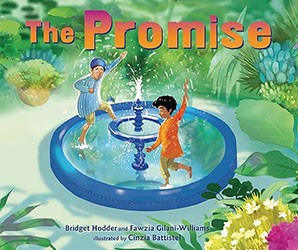
Image from Unsplash
Storytellers in Morocco tend to recreate tales of heroes in their own image. In my collection, I shed light on how portrayals of Seha, a wise fool in Moroccan folklore, have evolved as a result of social change and modernization in Jewish Morocco. Specifically, I explore Seha’s relationship to little-known aspects of Moroccan Jewish culture, such as humor (examining Asher Knafo’s Cantor at the Bathhouse and The Cantor, the Silent, and the Storyteller in particular).
Represented in Jewish, Muslim, and Christian stories throughout the Mediterranean basin, Seha was depicted in a variety of ways. In Jewish interpretations, Seha was the prophet Elijah, the Babylonian Rabbi Yose, an uneducated spice-maker, a saint, a yeshiva student, a wandering merchant, a jeweler, and a representative of Jewish Moroccan residents. He also took on many other roles, including an Amazigh fkih or sage, a folk doctor and birth registry holder, and a miracle-making beggar. When my grandfather, a rabbi, told me stories, he described Seha as similar to himself. My maternal grandmother presented Seha as a socioeconomic and political hero — as a reflection of her own proximity to local political leaders. My paternal grandmother, on the other hand, transformed him into a comedic, self-deprecating figure.
In fact, self-deprecation in Moroccan Jewish storytelling serves as a means of coping with the limitations of the dhimma system — a Muslim law that charged non-Muslims a tax in exchange for freedom of religion and property ownership. Humor in Seha tales lessens the differences between Moroccan Jews and their Muslim neighbors, fulfilling a community need to elevate the status of dhimma Jews. In some ways, Seha is reminiscent of Samsa, the protagonist of Kafka’s The Metamorphosis, who is transformed into a despised insect and tries to adjust to his living condition (Alt, 2005). However, the Moroccan Jewish Seha differs from Kafka’s Samsa; even though Seha is laughed at as a clown, he remains a proud, wise sage.
When my grandfather, a rabbi, told me stories, he described Seha as similar to himself.
The underlying narratives in Seha tales also shed a light on modernization as an autonomous process. The results of World War II gave rise both to Zionism and the Moroccan national movement. Many Jews began to leave Morocco, hoping to achieve emancipation through rational democratic processes in their new homelands. While they did find progress toward equality in Western countries, Israel’s advancement was somewhat delayed.
Despite fractionalizing pressures, Moroccan Jews in Israel tended to incorporate liberal thinking into traditional, rabbinical Judaism, in line with the practices of Maimonides. Israel’s “veteran” leaders, who were predominantly Eastern European, built a society in which Arab characteristics were devalued. What’s more, authoritarian policies stifled grassroots democratic processes, resulting in a factionalized society against which Moroccan Jews protested. Dhimma Jews rarely addressed these anxieties directly in their storytelling. Instead, they expressed them through humor so as not to create animosity. Seha was assigned ever-changing roles that embodied wisdom, lightheartedness, and compassion. The tales along with my commentaries fuse creative fiction with personal and family reality.
My analysis demonstrates that oral tales offer useful information about community organization, economic and political conditions, social change, and modernization. Moroccan storytelling contains rich histories worth further scholarly and literary exploration — and heroic Seha, in all his forms, makes for the perfect guide.
Marc Eliany is the chairman and founder of the Jewish Moroccan Museum and Archive.



